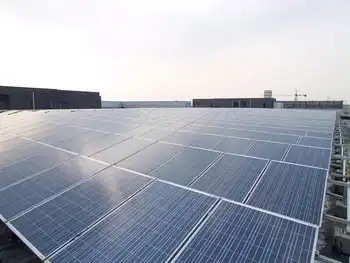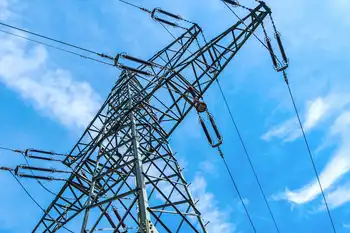Green jobs fail to materialize despite stimulus
Anton has been out of work since 2008, when his job as a surveyor vanished with Florida's once-sizzling housing market. After a futile search, at age 56 he reluctantly returned to school to learn the kind of job skills the Obama administration is wagering will soon fuel an employment boom: solar installation, sustainable landscape design, recycling and green demolition.
Anton said the classes, funded with a $2.9 million federal grant to Ocala's work force development organization, have taught him a lot. He's learned how to apply Ohm's law, how to solder tiny components on circuit boards and how to disassemble rather than demolish a building.
The only problem is that his new skills have not resulted in a single job offer. Officials who run Ocala's green jobs training program say the same is true for three-quarters of their first 100 graduates.
"I think I have put in 200 applications," said Anton, who exhausted his unemployment benefits months ago and now relies on food stamps and his dwindling savings to survive. "I'm long past the point where I need some regular income."
With nearly 15 million Americans out of work and the unemployment rate hovering above 9 percent for 18 consecutive months, policymakers desperate to stoke job creation have bet heavily on green energy. The Obama administration channeled more than $90 billion from the $814 billion economic stimulus bill into clean energy technology, confident that the investment would grow into the economy's next big thing.
The infusion of money is going to projects such as weatherizing public buildings and constructing advanced battery plants in the industrial Midwest, financing solar electric plants in the Mojave Desert and training green energy workers.
But the huge federal investment has run headlong into the stubborn reality that the market for renewable energy products — and workers — remains in its infancy. The administration says that its stimulus investment has saved or created 225,000 jobs in the green energy industry, a pittance in an economy that has shed 7.5 million jobs since the recession took hold in December 2007.
The industry's growth has been undercut by the simple economic fact that fossil fuels remain cheaper than renewables. Both Obama administration officials and green energy executives say that the business needs not just government incentives, but also rules and regulations that force people and business to turn to renewable energy.
Without government mandates dictating how much renewable energy utilities must use to generate electricity, or placing a price on the polluting carbon emitted by fossil fuels, they say, green energy cannot begin to reach its job creation potential.
"We keep getting these stops and starts in the industry. There is no way it can work like this," said Bill Gallagher, president of Solar-Fit, a Florida energy company whose fortunes have fluctuated with government incentives in its 35 years in business.
Although 29 states have enacted laws setting benchmarks for the amount of energy utilities must generate from renewable sources such as wind and solar, the standards vary greatly. And with a new congressional majority poised to take office — including many members elected pledging to reduce Washington's role in the economy — it remains an open question whether new federal regulations that support expansion of the industry would be enacted anytime soon.
"Green energy investment has been a central talking point of the Obama administration's job growth strategy," said Samuel Sherraden, a policy analyst at the New America Foundation, a nonpartisan research organization. "It was a little bit too ambitious given the size and depth of the recession and the small size of the renewable energy industry."
In Ocala, the federal emphasis on green energy was eagerly embraced by local officials grasping for ways to blunt the area's skyrocketing jobless rate, which now stands at 14 percent.
The housing crisis had decimated the local economy, wiping out thousands of jobs that will probably never return. There were huge losses in construction jobs. Several plants that made building supplies and home furnishings have gone out of business. And last year, Taylor Bean and Whitaker, a mortgage company that employed more than 1,000 people, suddenly closed.
Now with real estate development not predicted to resume its former breakneck pace anytime in the near future, the local economy is left without an obvious source of new jobs.
That means many of the real estate agents, construction workers, mortgage brokers, kitchen cabinet makers, retail clerks and building supply people thrown out of work are going to have to find new careers. The overhang of workers who will need new skills to find work in new industries made the promise of green energy jobs all the more appealing.
When Workforce Connection, Ocala's regional work force development board, applied for a federal green jobs training grant last year, its top goal was to retrain 665 workers in green jobs skills with "immediate employment potential."
Ocala seemed like a good place to bet on green energy, particularly solar. The region's various window companies and other light manufacturing firms, coupled with its strategic location as a southeastern distribution hub, make it a natural, local officials said.
"We felt like the expertise of a lot of the companies here translated easily to making solar panels and such," said Rusty Skinner, chief executive officer of Workforce Connection. "When you think of it, a solar panel is nothing more than a window with some added mechanisms."
Meanwhile, Central Florida's abundant sunshine made the idea of marketing solar water heaters and solar electrical systems to nearby homeowners seem like a winning proposition.
But those assumptions have yet to pan out.
Federal incentives, which cover 30 percent of the installation costs, were offset by a state energy policy in disarray. Funding for a Florida program that offered rebates to residents and businesses who invested in solar energy was suspended earlier this year, leaving more than $50 million in claims up in the air and paralyzing the solar energy business.
Although Florida officials recently decided to use federal stimulus money to pay down part of the backlog of claims, the damage had been done. The turmoil over the incentive programs meant installation firms and manufacturers no longer had a reason to expand, green energy advocates said.
"There is no growth in this industry right now," said Colleen Kettles, executive director of the Florida Solar Research and Education Foundation. "In fact, some are going out of business."
Related News

Clean-energy generation powers economy, environment
VANCOUVER - A First Nation-led clean-power generation project for British Columbia’s Northwest will provide a significant economic boost and good jobs for people in the area, as well as ongoing revenue from clean energy sold to the Yukon.
“This clean-energy project has the potential to be a win-win: creating opportunities for people, revenue for the community and cleaner air for everyone across the Northwest,” said Premier John Horgan. “That’s why our government is proud to be working in partnership with the Taku River Tlingit First Nation and other levels of government to make this promising project a reality. Together, we can…





